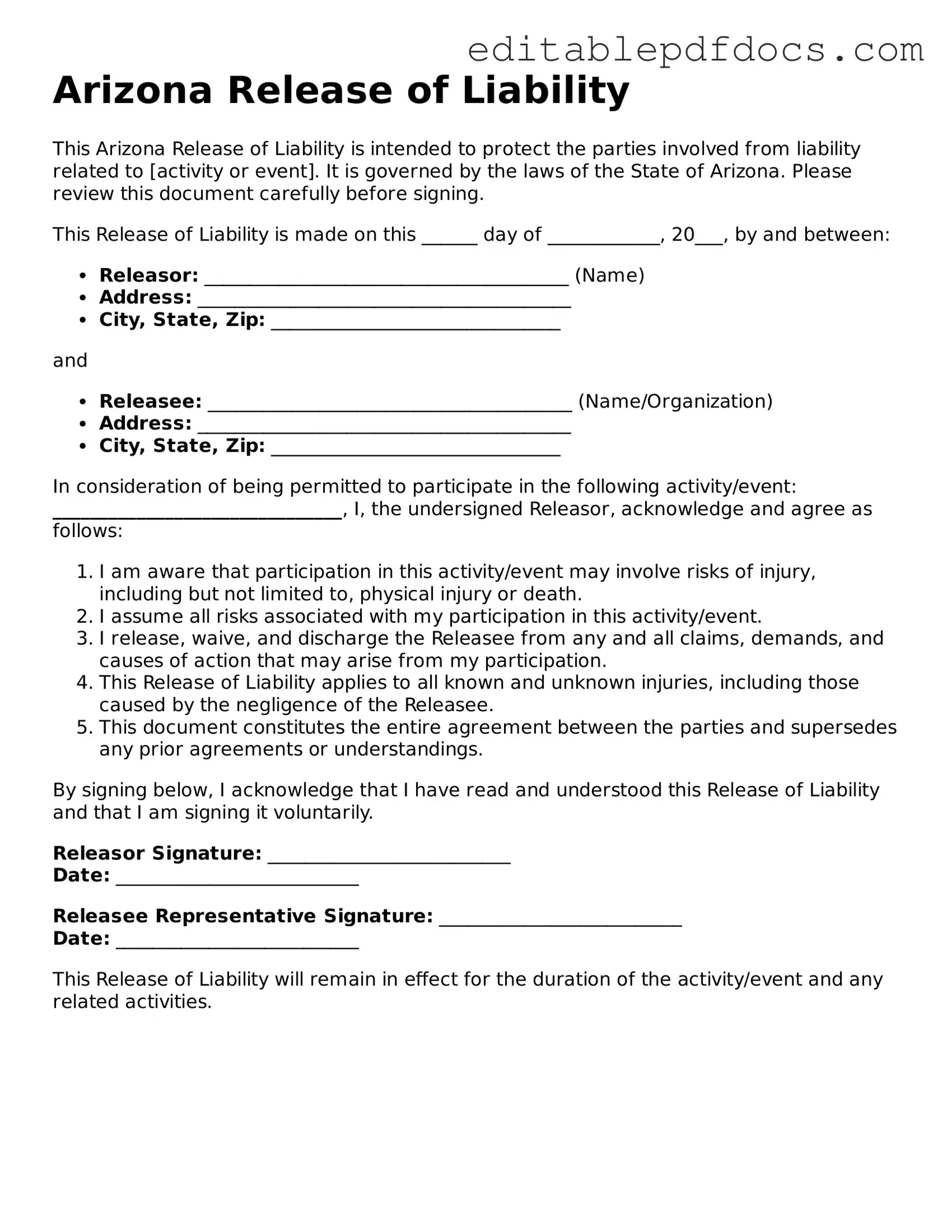Release of Liability Document for Arizona
The Arizona Release of Liability form is a legal document designed to protect individuals and organizations from claims related to injuries or damages that may occur during activities or events. By signing this form, participants acknowledge the risks involved and agree not to hold the organizers responsible for any unfortunate incidents. Understanding this form is crucial for anyone engaging in recreational activities or events in Arizona.
Ready to protect yourself and your organization? Fill out the form by clicking the button below.
Open Editor Now
